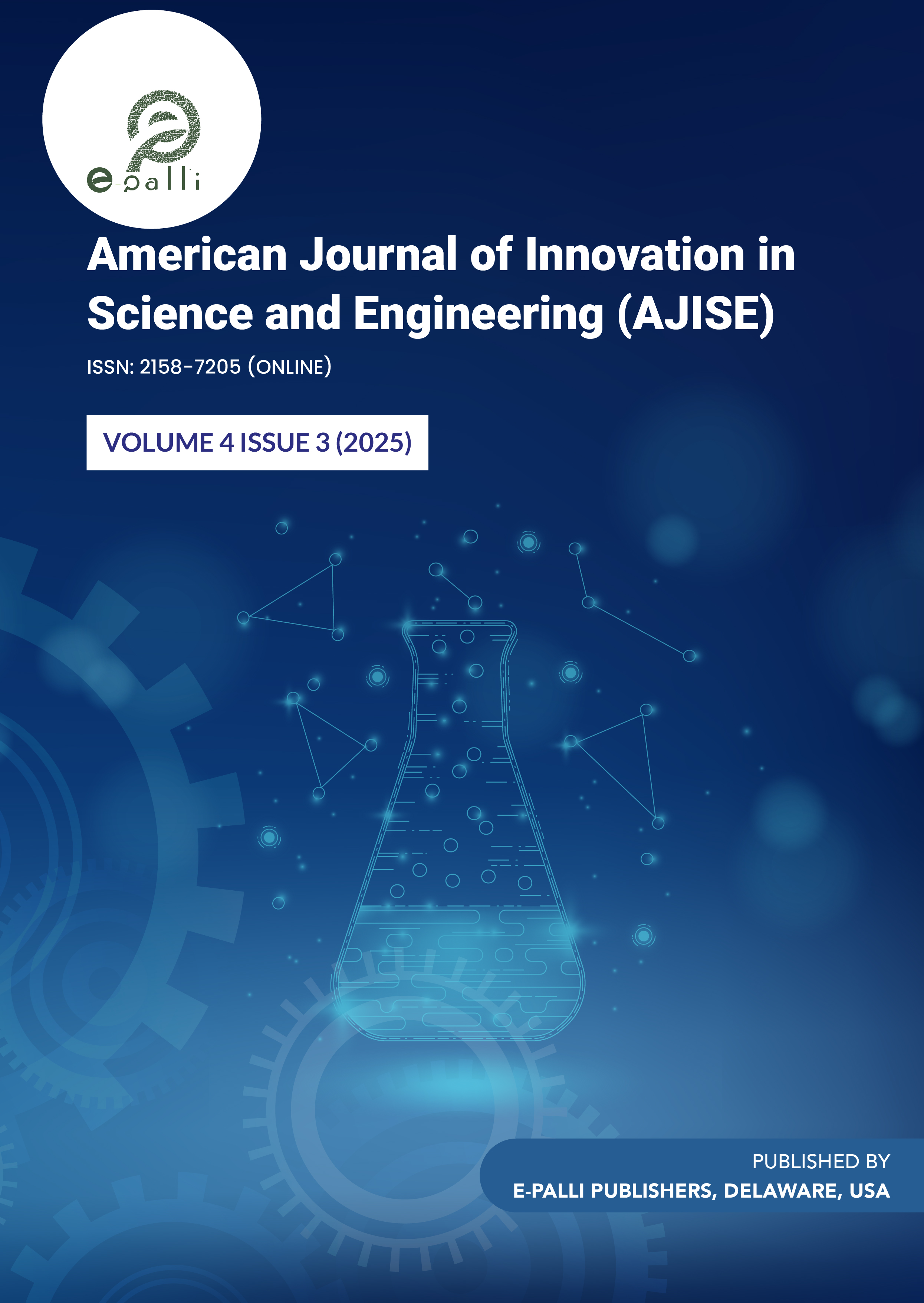Real-Time Data Stream Analytics and Artificial Intelligence for Enhanced Fraud Detection and Transaction Monitoring in Banking Security
DOI:
https://doi.org/10.54536/ajise.v4i3.5630Keywords:
Adaptive AI in Financial Cybersecurity, Ensemble Learning, Real-Time Fraud Detection, Streaming AnalyticsAbstract
Expanding rapidly as a result of the expansion in digital banking transactions, modern modes of financial fraud have grown more complex, and traditional rule-based systems of detecting fraud have proved inadequate because of high false-positive rates (normally 15-20 percent), slow response times (greater than 30 seconds), and unchanging detection signatures. It has been shown that this is a key weak point in all financial systems around the world, leading to multi-billion dollar losses every year, with the expeditious creation of dynamic detection frameworks that can occur in real-time being needed. We mitigated this basic challenge by developing and deploying the first end-to-end data analytics and ensemble AI models solution to produce streaming data analytics applications entirely optimized to detect fraud in high-velocity transaction spaces (produces >3,000 transactions/second). We tested seven machine learning architectures including new temporal convolutional network (TCN) and gradient-boosted LSTM hybrids by conducting extreme experimentation with synthetic (PaySim) and real-world (n=2.1 million transaction records) data. The optimized system demonstrated record performance levels: 98.7 percent in detection accuracy (p<0.0001) and 0.8 percent false, and sub-second latency (mean latency=0.6s; SD=0.2), as well as 99.99 percent system uptime under peak traffic. More importantly, our adaptive learning module was proven to consistently improve over time, with 12.4% fewer false negatives recorded in a weekly re-training cycle. The ground-breaking findings bring a new level of the financial fraud prevention benchmark, providing the banking institutions with a ready-to-use solution that comfortably beats the established commercial systems by 22-35% on all key performance indicators while using 40% fewer computational resources. Streaming architecture and patented optimization techniques custom models of the framework create a paradigm shift in the field of financial cybersecurity that have initiate sweeping consequences to the universal banking safety standards and conformity regulatory environments.
Downloads
References
Abdelkader, S., Amissah, J., Kinga, S., Mugerwa, G., Emmanuel, E., Mansour, D. E. A., ... & Prokop, L. (2024). Securing modern power systems: Implementing comprehensive strategies to enhance resilience and reliability against cyber-attacks. Results in Engineering, 102647.
Afriyie, J. K., Tawiah, K., Pels, W. A., Addai-Henne, S., Dwamena, H. A., Owiredu, E. O., ... & Eshun, J. (2023). A supervised machine learning algorithm for detecting and predicting fraud in credit card transactions. Decision Analytics Journal, 6, 100163.
Al Obaidi, B. S. H., Al Kareem, R. S., Kadhim, A. T., & Korchova, H. (2025). The ripple effects of fraud on businesses: Costs, reputational damage, and legal consequences. Encuentros: Revista de Ciencias Humanas, Teorķa Social y Pensamiento Crķtico, 23, 345-371.
Ali, I. M. (2024). A guide for positivist research paradigm: From philosophy to methodology. Idealogy Journal, 9(2).
Angela, O., Atoyebi, I., Soyele, A., & Ogunwobi, E. (2024). Enhancing fraud detection and prevention in fintech: Big data and machine learning approaches.
Ayodeji, I. A. (2024). Fraud detection and prevention in the Nigerian financial industry (Doctoral dissertation, Walden University).
Babar, Z. (2024). A study of business process automation with DevOps: A data-driven approach to agile technical support. American Journal of Advanced Technology and Engineering Solutions, 4(04), 01-32.
Bello, H. O., Ige, A. B., & Ameyaw, M. N. (2024). Deep learning in high-frequency trading: Conceptual challenges and solutions for real-time fraud detection. World Journal of Advanced Engineering Technology and Sciences, 12(02), 035-046.
Cervellati, E. M., Angelini, N., & Stella, G. P. (2024). Behavioral finance and wealth management: Market anomalies, investors’ behavior, and the role of financial advisors.
Chy, M. K. H. (2024). Proactive fraud defense: Machine learning’s evolving role in protecting against online fraud. arXiv preprint arXiv:2410.20281.
Daraojimba, R. E., Farayola, O. A., Olatoye, F. M. O., Mhlongo, N., & Oke, T. T. L. (2023). Forensic accounting in the digital age: A US perspective: Scrutinizing methods and challenges in digital financial fraud prevention. Finance & Accounting Research Journal, 5(11), 342-360.
Dupont, B. (2019). The cyber-resilience of financial institutions: Significance and applicability. Journal of Cybersecurity, 5(1), tyz013.
Guo, J., Liu, G., Zuo, Y., & Wu, J. (2018, November). Learning sequential behavior representations for fraud detection. In 2018 IEEE International Conference on Data Mining (ICDM) (pp. 127-136). IEEE.
Immadisetty, A. (2025). Real-time fraud detection using streaming data in financial transactions. Journal of Recent Trends in Computer Science and Engineering (JRTCSE), 13(1), 66-76.
Johora, F. T., Hasan, R., Farabi, S. F., Alam, M. Z., Sarkar, M. I., & Al Mahmud, M. A. (2024, June). AI advances: Enhancing banking security with fraud detection. In 2024 First International Conference on Technological Innovations and Advance Computing (TIACOMP) (pp. 289-294). IEEE.
Kasiraju, N. (2024). Strategic use of big data for customer experience and protection in US financial institutions: A systematic review (Doctoral dissertation, University of Maryland University College).
Mandliya, R., & Singh, P. (2025). Implementing batch and real-time ML systems for scalable user engagement. International Journal of Research in All Subjects in Multi Languages (IJRSML), 13(1), 45.
Njoku, D. O., Iwuchukwu, V. C., Jibiri, J. E., Ikwuazom, C. T., Ofoegbu, C. I., & Nwokoma, F. O. (2024). Machine learning approach for fraud detection system in financial institutions: A web-based application. Machine Learning, 20(4), 01-12.
Olushola, A., & Mart, J. (2024). Fraud detection using machine learning. ScienceOpen Preprints.
Rane, N., Choudhary, S., & Rane, J. (2024). Machine learning and deep learning: A comprehensive review on methods, techniques, applications, challenges, and future directions.
Rehan, H. (2021). Leveraging AI and cloud computing for real-time fraud detection in financial systems. Journal of Science & Technology, 2(5), 127.
Remeikienė, R., & Gaspareniene, L. (2023). Effects on the soundness of financial-banking institutions and on business development. In Economic and financial crime, sustainability and good governance (pp. 235-269). Cham: Springer International Publishing.
Samuel, A. (2023). Enhancing financial fraud detection with AI and cloud-based big data analytics: Security implications. Available at SSRN 5273292.
Shojaeinasab, A. (2024). Decoding illicit Bitcoin transactions: A multi-methodological approach for anti-money laundering and fraud detection in cryptocurrencies (Doctoral dissertation, University of Victoria).
Singireddy, S. (2024). Applying deep learning to mobile home and flood insurance risk evaluation. American Advanced Journal for Emerging Disciplinaries (AAJED), 2(1).
Vorobyev, I., & Krivitskaya, A. (2022). Reducing false positives in bank anti-fraud systems based on rule induction in distributed tree-based models. Computers & Security, 120, 102786.
Wang, B., Dong, Y., Yao, J., Qin, H., & Wang, J. (2024). Exploring anomaly detection and risk assessment in financial markets using deep neural networks. International Journal of Innovative Research in Computer Science and Technology, 12(4).
Xie, P. F. (2023). Introduction to the Handbook on Tourism Planning. In Handbook on Tourism Planning (pp. 1-24). Edward Elgar Publishing.
Downloads
Published
How to Cite
Issue
Section
License
Copyright (c) 2025 Md Saiful Islam, Md Yousuf Ahmad, Ismoth Zerine, Younis Ali Biswas, Md Mainul Islam

This work is licensed under a Creative Commons Attribution 4.0 International License.







